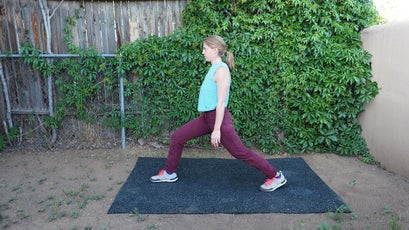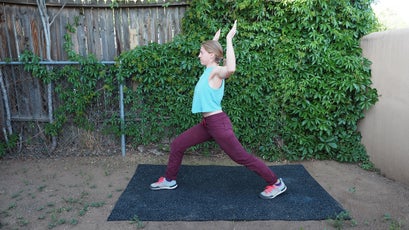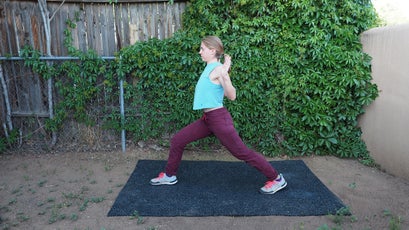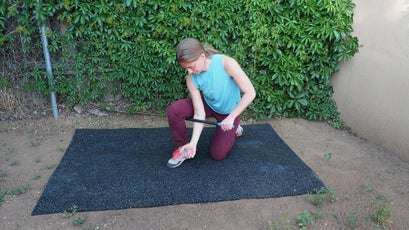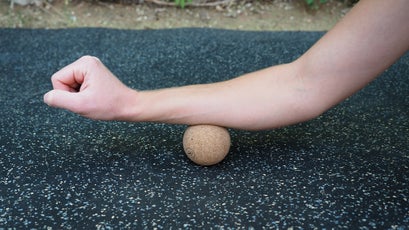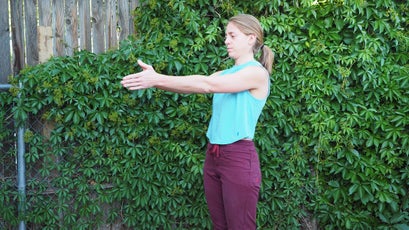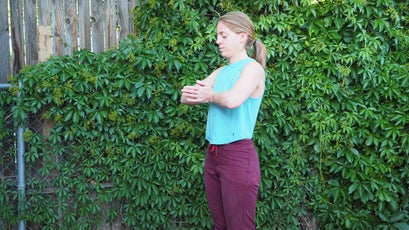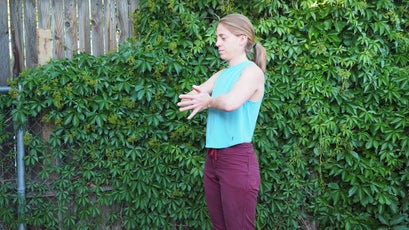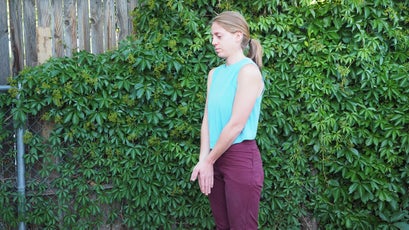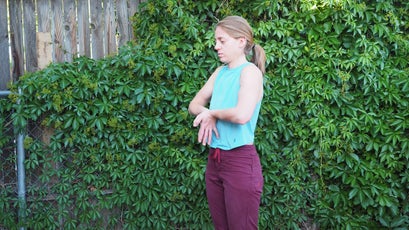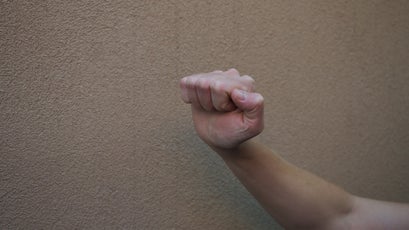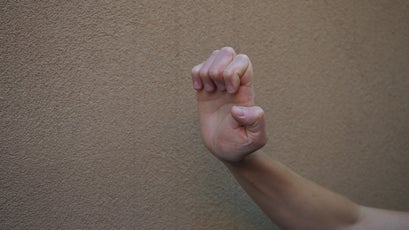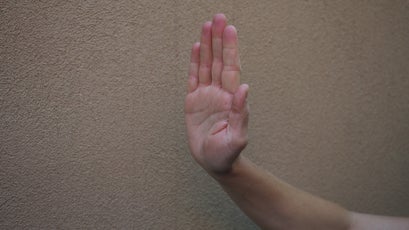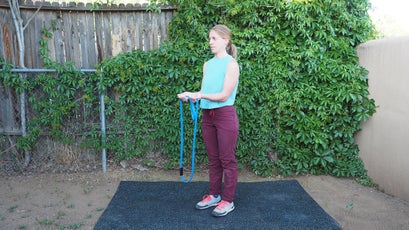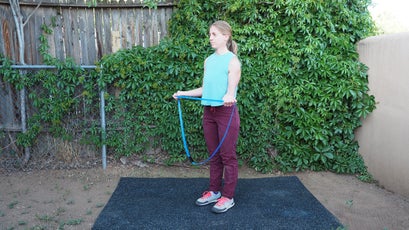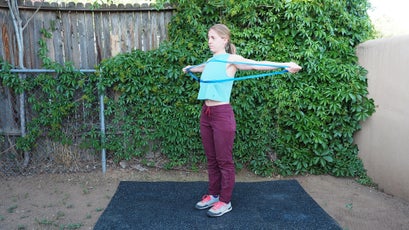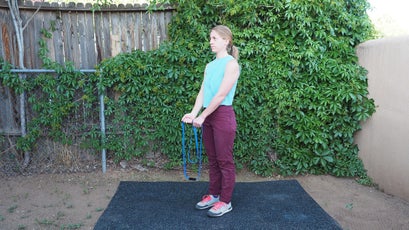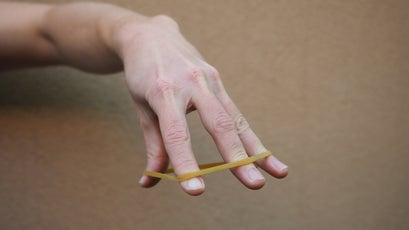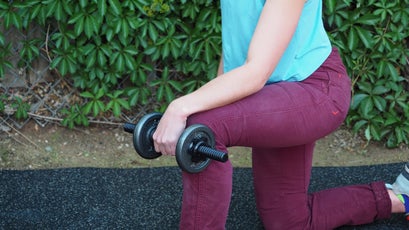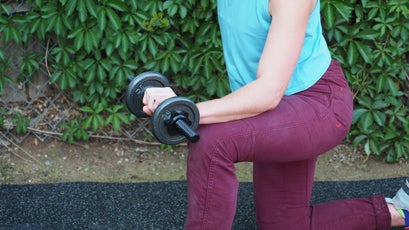Climbers tend to be hyper-focused on training their finger and pulling strength, at the expense of antagonist muscle groups, mobility, and recovery. With gyms closed or at limited capacity, more people are turning to��hang boards,��, and homemade woodies—but at a cost: the high-intensity, repetitive movements of these types of workouts can place stress on finger pulleys, tendons, shoulders, and the neck and upper back. This can lead to a host of overuse injuries, especially for those who are new to climbing-specific training, coming off a break, or increasing��their training volume.��“Similar patterns keep showing up,” says��, a physical therapist based in Boulder, Colorado. “I’ve got people reaching out to me from all over the place right now—not just for finger-tendon problems��but for the shoulders, neck, wrists, and nerves.”
Moreover, bad habits in our day-to-day lives can feed patterns of injury, Haas says.��Sitting all day with poor posture and endlessly scrolling on social media can strain��the same areas that are overused when climbers train. “They go hand in hand. If you build up tension all day, even if you try to warm up, you’re going to be more susceptible to injury,” she��says. “Trying to undo that pattern so you have the optimal, functional mechanics is what’s going to keep you healthy.”
These mobility and strength exercises from Haas are meant for climbers who are currently free of injury, to help prevent future injury. If you already suffer from tweaky tendons, dodgy shoulders, or unidentified aches and pains, seek��advice from your physical therapist.
Do these moves daily. “In an ideal world, I like people to undo patterns of tension right after they’ve created it,” Haas says. In other words, if you’ve been slumped in front of a screen for hours, it’s best to do this routine��at the end of the workday,��especially before you hop on the hangboard. Or��you can do��these moves��at the end of a workout to��help with recovery. But��recognizing your life might be far from normal��right now, Haas adds, “you don’t need to do all of this at once.” If you’re limited on time, try to sprinkle in these exercises throughout the day.
Tools You’ll Need:��
- Foam roller
- Small��massage ball, Super Ball, or rubber-band ball
- Large massage or lacrosse ball, massage stick, or Armaid
- Long resistance band
- or rubber bands
- Dumbbell
The Moves

Foam-Roller Spine Extension
What it does: Extends the upper back��to help correct the classic��, easing tension on the shoulder joints.
How to do it: Lie on your back on a��foam roller, with the roller positioned perpendicular to your spine and below your shoulder blades. Place your hands behind your head to support your neck. Keep your knees bent, your feet flat on the floor, and your core engaged. Then gently lower your head toward the floor to round your upper back until you feel a stretch. Hold this position, and relax deeper into the stretch with every exhale. Roll out your back while you’re at it.
Volume: 30 to 60 seconds, three times per day.
High Lunge with Dynamic Arm Wheels
What it does: Opens the chest and fires up the scapular muscles of the upper back to��improve posture, with a bonus stretch to the hip flexors.
How to do it: Take a large step forward to��enter a lunge, but keep your back leg straight. Gently sink your hips until you feel a stretch in the hip flexors and quad of your rear leg (it’s OK��if your heel lifts). Then slowly sweep your arms forward and overhead, keeping them straight. Continue to pull your shoulders backwards as you bend your elbows to 90 degrees (into cactus arms). Then straighten them again as you bring your arms around toward the ground to complete the circle. Repeat. Do three reps total, then switch your stance so your opposite leg is forward.
Inhale as you reach your arms up, and exhale as you draw them down. Keep your legs engaged, avoid overarching your lower back, and find length in your spine and back leg as you move your arms in a smooth, continuous motion.
Volume: Start with one round on each leg, and do more if you’re overly tight.

Finger and Hand Rollout
What it does: Releases tension and increases circulation in the intrinsic hand and thumb muscles. Do this before you tackle the forearms.
How to do it: Use a small��massage ball or Super Ball (or ) to gently roll out your palms and the front of your fingers. Either place the ball on a surface and roll it around under your hand—a great distraction during Zoom meetings—or roll it between both hands.��
Volume: 30 to 60 seconds per hand.
Forearms Massage
What it does: Releases tension and increases circulation in the forearms, with an emphasis on the finger flexor muscles (inside the forearm) that are used for gripping—and often abused when climbing and hang-boarding.
How to do it: You can use a variety of tools for this, such as��a lacrosse or massage ball, a massage stick��, the side of a soup can, or a specialized device such as��the Armaid. Whatever you have, use it to gently roll out your forearms. Dedicate the most amount of time to the meaty sections on the inside, but don’t forget to hit the back of your forearms��as well. Avoid rolling over the stingy tendons around your wrists or the bony protrusions near your elbows, since that can irritate nerves and other sensitive structures.
Volume: 30 to 60 seconds per arm (or more��if they feel overly tight).
Namaste Stretch (Dynamic Wrist Stretch)
What it does: Stretches your wrist and finger flexor muscles in three directions.
How to do it: This exercise involves three movements. Complete all reps of one movement before moving on to the next. Stop when your fingers begin to bow or your palms begin to pull apart. Be gentle with yourself.��
- Press your palms together at shoulder height, with your fingers aiming toward your chin and your elbows at your sides. Keep your shoulders relaxed. Slowly push your hands down until you feel a stretch in your wrists and forearms. Pause for a second, spread your fingers wide, pause for another second, then reverse the movement to the starting position. Repeat twice more.
- Stretch your arms in front of you at chest level, with your palms together and your fingers pointed forward. Slowly draw in your hands to your ribs until you feel a stretch in your wrists and forearms. Pause for a second, spread your fingers wide, pause for another second, then reverse the movement to the starting position. Repeat twice more.
- Extend your arms toward the ground, with your palms together and your fingers pointed down. Pull your hands up toward your chin until you feel a stretch in your wrists and forearms. Pause for a second, spread your fingers wide, pause for another second, then reverse the movement to the starting position. Repeat twice more.
Volume: One or more rounds of each movement, depending on how tight you feel.��
Finger Tendon Glides
What they��do: Move��the finger flexor tendons through a full range of motion to increase their mobility and circulation, which will help keep them strong and healthy.
How to do them: Start with your fingers pressed flat against your palm, curl them up into a fist, then unroll them joint by joint until your hand is fully open. Reverse the movement to the starting position for one repetition.
Once you get the hang of it, do these in a variety of positions to better mimic the movement patterns of climbing. For example, reach your arms overhead, out to the sides, across your body—get creative. Try it with your elbows bent and straight.��
Volume: Three sets of eight to twelve reps (or more��if needed). These are easy to do at your desk, on a walk, or throughout the day.
Resistance-Band Reverse Fly Variations
What they do: Strengthen��the often ignored rotator cuffs (shoulder stabilizers) and scapular muscles��to help improve posture and keep the shoulders in an optimal position for climbing—also a great way to activate these muscles before climbing or training.
How to do them: These exercises involve three movements with a long resistance band (yoga pants, running tights, or anything long and stretchy will work in a pinch). Start in a neutral stance. Once you get the gist of it, mix in different positions, such as a��forward lunge, squat, or single-leg balance, to increase the challenge and incorporate the whole body.
- Elbows bent: Grip the band with your palms facing up��and your hands roughly shoulder-width apart (adjust your grip as necessary—narrower will make it harder, and wider will make it easier). Start with your elbows at your sides, bent to 90 degrees, and your hands aiming forward, like you’re holding a tray. Then rotate your arms outward, parallel to the floor, while keeping your elbows at your sides. Pause, slowly reverse the movement, and repeat.
- Arms straight:��Next, extend your arms in front of you at chest��level, palms up, and with a slight bend in your elbows, like you’re offering someone the tray. Relax your shoulders, and draw together your shoulder blades—but don’t pin them in place, since they need to glide during the movement. Then rotate your arms out to the sides. Pause, reverse the movement, and repeat.
- Diagonal:��Lastly, start with your arms straight down and your hands at waist or hip��level��in front of you. Reach one arm up and out to the side at a 45-degree angle, like you’re doing the disco (keep your thumb facing up��so you don’t impinge your shoulder), while bringing the other arm down and out in the opposite direction. Pause, reverse the movement, and repeat. Complete another set with your arms moving in the opposite directions.
For all three movements, stand tall, hold your chest and head high, and keep your shoulders relaxed. The purpose is to strengthen your back while��maintaining��good posture, rather than reinforcing the bad habit we’re trying to prevent.
Volume: For a strength workout, do three sets of eight to twelve reps��for��each movement. For a warm-up, do one set of eight to twelve reps with a lighter band or a wider grip. Finish a set of one movement before moving to the next.
Finger Extensions
What they do: Strengthen��the finger-extensor muscles and tendons on the back of��the forearm��to improve muscle balance.
How to do them:��Take��a finger trainer, like����or��, or a thick rubber band (double up��if you need more resistance)��and loop it around the tips of your fingers. Start with your fingers together, spread them as wide as possible, then slowly reverse the movement. Keep your fingers as straight as possible and your wrist neutral throughout the exercise. Try it in different climbing positions (with your hand overhead, out to the side, etc.) This is an easy one to do at the desk or in the car.
Volume: Three sets of eight to twelve reps.
Wrist Extension and Eccentric Lower
What it does: Strengthens the wrist-extensor muscles on the back of��the forearm��to improve muscle balance.
How to do it: Grab a dumbbell or a similar heavy object, like a hammer or a��full��water bottle.��Place your forearm on your thigh, with your wrist over the edge of your knee to isolate the movement. Then raise the weight, bending only at the wrist. Slowly—over two to three seconds—lower it back to the starting position. This will emphasize the eccentric phase of the movement, which is shown to be protective of tendons.
If you don’t have dumbbells, you can also perform the movement with wrist-roller lowers or concentric and eccentric twists using a�� (more on that here).
Volume: Three sets of eight to twelve reps.



